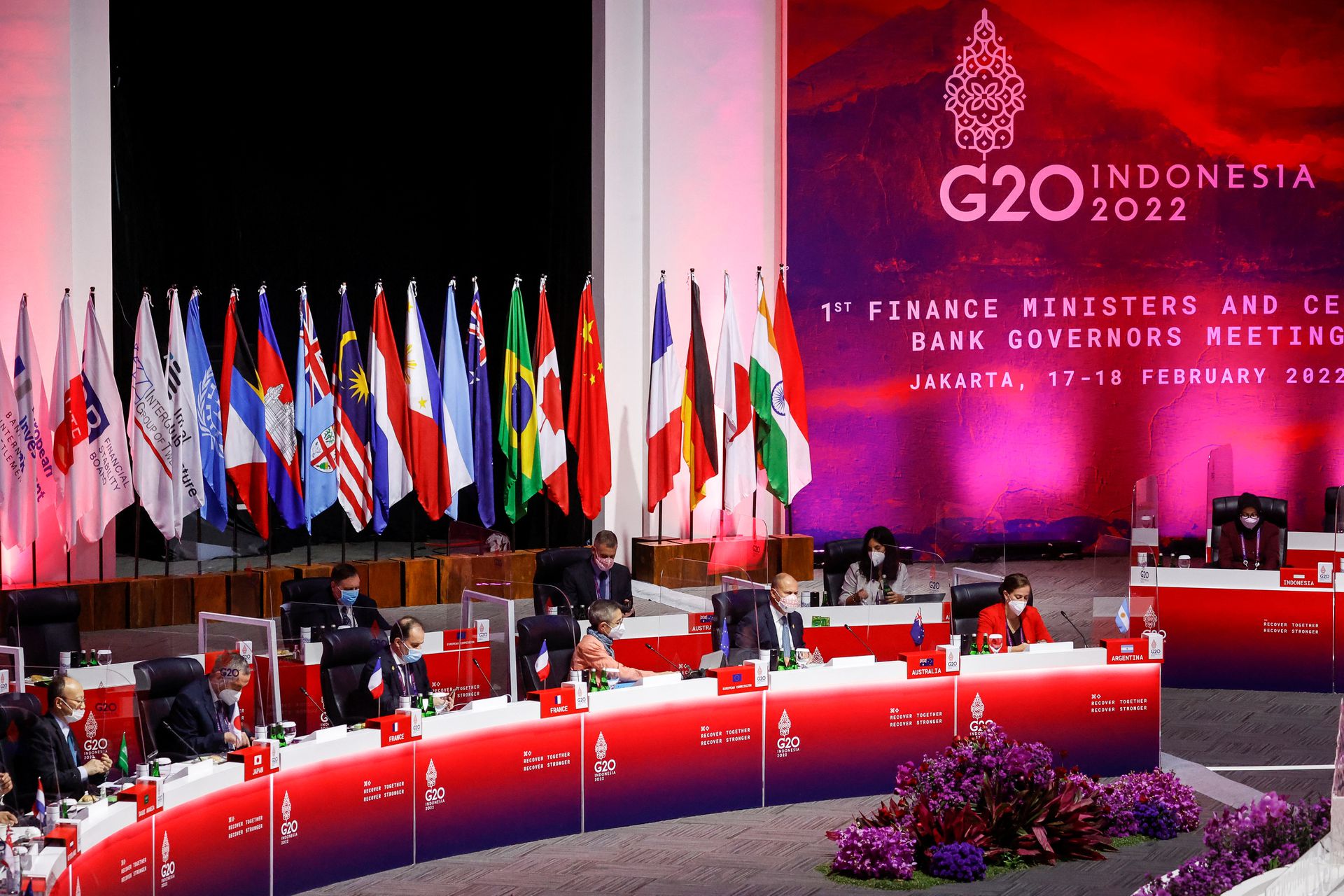ECONOMIC SURVEY 2023
Context: The Economic Survey 2023, presented by the Finance Minister in Parliament, painted an optimistic picture of the Indian economy’s prospects, claiming that the pandemic-induced blues are over.
What is the Economic Survey?
It provides a detailed report of the state of the national economy (from agriculture to unemployment to infrastructure) for the year that is coming to a close (2022-23) with forecasts of the upcoming financial year (2023-24).
It is prepared by the Economic Division of the Department of Economic Affairs (DEA), Ministry of Finance, under the guidance of the chief economic adviser (CEA).
Once prepared, the Survey is approved by the Finance Minister and the comments or policy solutions contained in the Survey are not binding on the government.
The first Economic Survey was presented for 1950-51 and until 1964, it was presented along with the Budget.
Key highlights of the Economic Survey 2023:
|
Key parameters |
Projections/ Performance |
Drivers/ Takeaways |
||
|
GDP growth |
India is to witness GDP growth of 6.0 – 6.8% in 2023-24, depending on the trajectory of economic and political developments globally |
? The rebound of private consumption ? Higher Capital Expenditure (Capex) ? Near-universal vaccination Return of migrant workers to cities ? strengthening the balance sheets of the Corporates, ? Well-capitalized public sector banks ready to increase the credit supply to the MSME sector |
||
|
Inflation |
? The RBI has projected headline inflation at 6.8% in FY23, outside its comfort zone of 2% to 6%. ? However, the Survey sounded optimistic about the inflation levels. |
Not high enough to deter private consumption and not low to weaken the inducement to invest |
||
|
Employment-Unemployment |
The PLFS showed that the urban unemployment rate for people aged 15 years and above declined from 9.8% in the quarter ending September 2021 to 7.2% one year later. |
? Despite layoffs, the number of direct jobs created by Indian startups rose 36% in 2022. ? Improvement in the labor force participation rate ? The initial surge in exports ? A strong release of the “pent-up” demand ? A swift rollout of the capex. |
||
|
Health |
? India’s budgeted expenditure on the health sector reached 2.1% of the GDP in the financial year 2023 (Budget estimates) and 2.2% in FY 2022 (revised estimates). ? The National Health Policy 2017 as well as the 15th Finance Commission recommended 2.5% by 2025. |
? Increase in the share of government health expenditure (in comparison to the total health expenditure) ? This is due to expenditure incurred on the national Covid-19 vaccination program, Aatmanirbhar Bharat Abhiyaan, Intensified Mission Indradhanush (MI) program ? The decline in out-of-pocket expenditure ? Ayushman Bharat Jan Arogya Yojana (AB-JAY) falling short of the target: Less than 50% of the originally targeted 50 crore beneficiaries under the scheme. |
||
|
Education |
As a share of total GDP, the budgetary allocation for education saw only a minimal gain of 0.1 percentage points, from 2.8% to 2.9% during the same seven-year period. |
? Decline in the govt share of expenditure, while the expenditure on social services increased. ? COVID worsens dropout rates at primary and upper primary school levels ? Higher education enrolment increased |
||
|
Agriculture |
? The Indian agriculture sector has been growing at an average annual growth rate of 4.6% during the last six years. ? In recent years, India has also rapidly emerged as the net exporter of agricultural products (an all-time high of $50.2 billion during 2021-22) |
? Strong agri growth led to a YoY dip in monthly demand for MGNREGS. ? Interventions like the PM Kisan, PMFBY, and the push given to Kisan Credit Cards have been significant. ? The sector needs “re-orientation” given challenges like adverse impacts of climate change, fragmented landholdings, and rising input costs. |
||
|
Services: Source of strength |
? India has been placed among the top 10 service-exporting countries in the year 2021. ? The commercial services export has increased from 3% in 2015 to 4% in 2021. |
? Contact-intensive services like hotel, tourism, retail trade, entertainment, and recreation, have registered a sequential growth of 16% at pre-pandemic levels. ? Non-contact intensive services like ICT, financial, professional, and business services have contributed significantly to the economy. |
||
|
Industry: Steady recovery |
The industry not only accounts for 31% of the GDP but also has a significant contribution in generating employment for up to 12.1 crore people in the financial year 2023, directly or indirectly. |
? Path-breaking measures such as PM GatiShakti, the National Logistics Policy, and the Production-Linked Incentive schemes to boost manufacturing output. |
||
|
Infrastructure |
Digital infra: In 2022, over a billion people have unique digital ID documents, more than 80% have bank accounts, and over 600 cr digital payment transactions have been completed on a monthly basis. |
? Digital infrastructure has given robust growth during the pandemic era. ? Digital infra can add 60-100 bps to GDP growth. ? Government’s vision for physical infrastructure development – Public Private Partnerships, National Infrastructure Pipeline, National Monetisation Pipeline, etc. |
||
|
Climate Change and Environment: Preparing to Face the Future
|
? India declared the Net Zero Pledge to achieve a net zero emissions goal by 2070. ? India achieved its target of 40% installed electric capacity from non-fossil fuels ahead of 2030. |
? National Green Hydrogen Mission to enable India to be energy independent by 2047. ? The Survey highlights the progress on eight missions under the NAPCC to address climate concerns and promote sustainable development. ? E- vehicle sales to touch 1Cr units by 2030. |
||
|
Shipbuilding |
· As of date, more than 130 warships have been constructed at Indian shipyards, and currently, 41 of 43 ships and submarines are being constructed at various public and private sector shipyards in India |
· Shipbuilding has one of the highest employment multipliers and is capable of generating mass employment in remote, coastal, and rural areas |
||
|
Startups |
· Despite layoffs, the number of direct jobs created by Startups rose 36 percent to around 2.7 lakh last year · The number of start-ups recognized by the Department for Promotion of Industry and Internal Trade (DPIIT) has increased from 452 in 2016 to 84,012 in 2022 |
· Start-ups are being envisioned as the spine of the ‘new India’ as they encouraged youth to become job creators rather than job seekers |
||
|
Electronics |
· India is on the “right trajectory” to reach $300 billion worth of electronics manufacturing and $120 billion in exports by FY26 due to an improvement in manufacturing and export over the last five years. |
· India has become the second-largest mobile phone manufacturer globally · Domestic companies, such as Tata, have indicated an interest in establishing semiconductor fabrication plants in the country |
||
Challenges ahead:
Uncertainty remains: The Survey signals that vulnerabilities to India’s growth mainly stem from external factors, while domestic drivers remain strong.
For example, there are upside risks to commodity prices from external factors such as the Russia-Ukraine conflict, China rapidly reopening its economic activity, etc.
2023 = 2003: The Survey argued that the situation in 2023 is similar to 2003, as the period between 2014 and 2022 is analogous to 1998-2002 when despite transformative reforms by the government, the Indian economy lagged in growth returns.
This was due to temporary shocks such as the US sanctions after India’s nuclear test, two successive droughts, the collapse of the tech boom, etc. But once these shocks faded, the structural reforms paid growth dividends from 2003.
Similarly, the successive shocks in recent years, such as the ILFS collapse, the COVID-19 pandemic, etc., have led to a lag in the growth effects of sweeping reforms across multiple dimensions.
Way ahead:
Vigilant on inflation, and deficit: Monetary and fiscal authorities will need to stay proactive and vigilant on inflation as well as the worsening CAD front, which is facing multiple risks due to slowing exports, rising import bills, etc.
The private sector should take the lead: Though the fiscal policy has supported public investments for infrastructure projects, the time has probably come for the private sector to take on the baton of contributing to economic growth.
Digital Public Goods:
Schemes like MyScheme, TrEDS, GEM, e-NAM, UMANG have transformed India’s market place and has enabled citizens to access services across sectors.
Open Credit Enablement Network aims towards democratising lending operations while allowing end-to-end digital loan applications.
National AI portal has published 1520 articles, 262 videos, and 120 government initiatives and ‘Bhashini’ is being viewed as a tool for overcoming the language barrier.
The bouquet of digital public infrastructure products like e-RUPI, e-Way Bill etc. have ensured real value for money to consumers while reducing the compliance burden for producers.
-------------------------------------------------------------------------------------------




.jpg)
.jpg)
.jpg)
.jpg)
.jpg)





